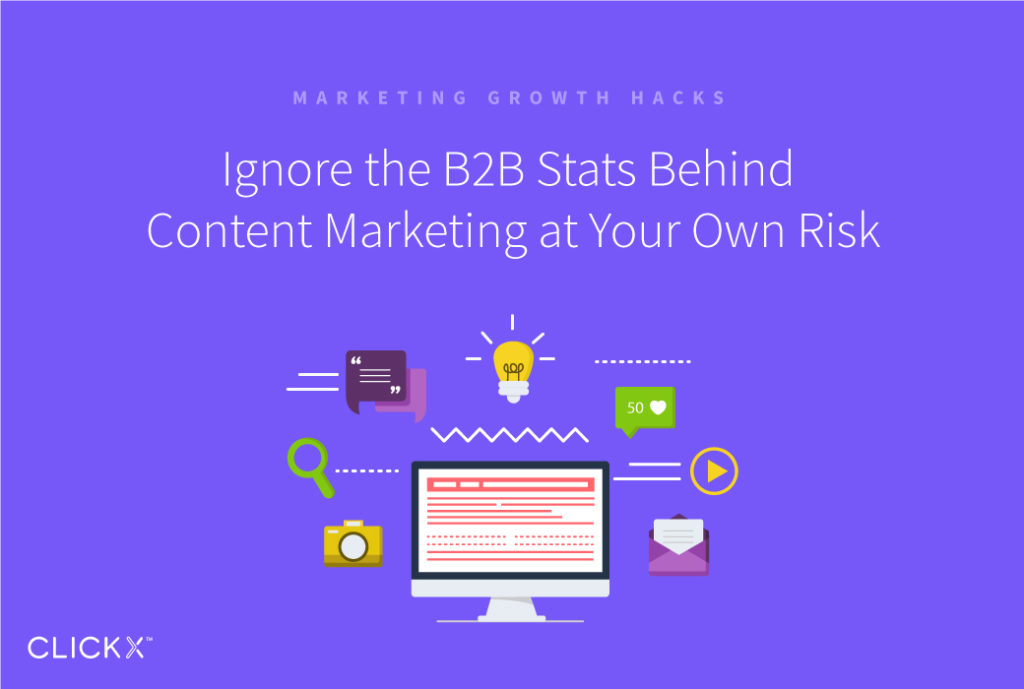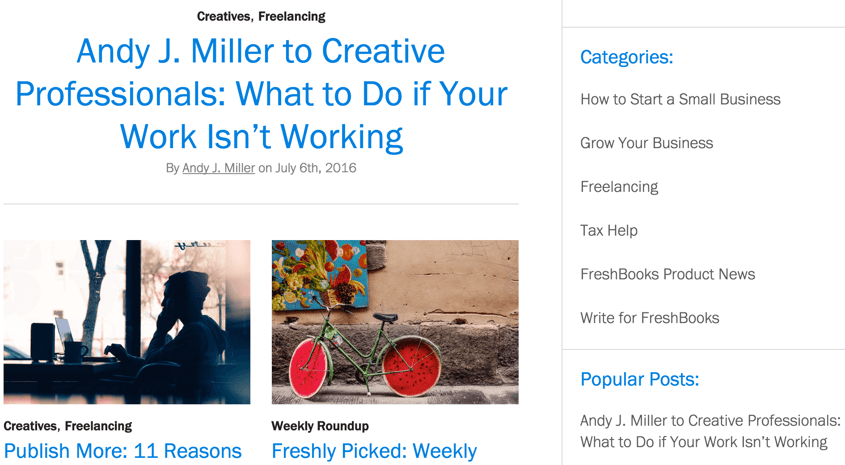Ignore the B2B Stats Behind Content Marketing at Your Own Risk
Creating any Business to Business (B2B) strategy requires a deep understanding of your customers, as they’re also businesses with a bottom line to worry about. How you build your content marketing strategy to reach them is no different in this regard.
Thankfully, you can get a head start by using publicly available data and statistics to dominate the field—it’s simply a case of knuckling down to do the research so you can apply your findings to your strategy.
Today, we’ll dive into three important B2B content marketing statistics. Once we’re finished, you’ll understand how they can help you to stay ahead of the game. Let’s get cracking!

Only 32% of B2B Marketers Have a Documented Content Marketing Plan
Of the 88% of B2B marketers that use content marketing, only 32% have a well documented plan. Research shows those who track their strategy see high rates of success, and it just so happens that the process of documenting and preparing a plan is the key.
Yes, plans are just elaborate guesses. However, they play a valuable role—that of a guidance tool, and a way for us to make informed decisions later down the line.
Documenting your goals helps you to anticipate and deal with potential issues proactively, by focusing on the overarching benefits rather than getting caught up in unimportant details. This is especially true in the marketing world, where vanity metrics run wild and you need to stay on target.
Your content marketing plan will always be a work in progress, and you won’t know what works or not until you put it into action and adjust as necessary. What’s important is to create a plan in the first place. Because only 32% of marketers have a plan, it means most B2B marketers out there are just winging it—and you can easily get ahead of the game simply by creating an intentional strategy.
[Tweet “You can easily get ahead of the content marketing game by creating an intentional strategy.”]
It’s a fun exercise to try to find the content marketing plan behind other business’ blogs. Let’s have a look at FreshBooks’ blog for example:

Their clear categories show us exactly what kind of clientele they’re targeting:
- How to Start a Small Business
- Grow Your Business
- Freelancing
- Tax Help
These topics are all very specific to their business clients, who would have a lot of related questions. A quick review of their recent posts shows they publish fresh content every 1–4 days, cycling through each of their categories to ensure their entire audience gets new catered content every week.
They also write for specific industries, such as:
- Creatives
- Business Consulting and Legal
- Marketing and Events
- IT and Web Development
- Health and Wellness
- Trades, Construction and Home Services
By creating an intersection of these two category lists, they are constantly pushing out a fresh perspective about each topic for each target industry. This is no coincidence, and it clearly took some careful planning.
So, how can you adapt this to your own target audience?
How Create Your Content Marketing Plan
Kickstart your plan by checking out your competitors and review their content marketing strategy in full. This gives you specific insight as to what will work best for your own company.
Once you’ve discovered what works for similar businesses, lay the foundation for your strategy—review our previous article on the elements every B2B content marketing plan needs, then analyze your site to track how well your rankings improve.

87% of B2B Marketers Rank Sales Lead Quality as the Most Important Metric
B2B marketers often quote website traffic as their most often used metric. However, when asked to rank their metrics by importance, 87% reported that sales lead quality was the most important.
In other words, you may hear a lot about impressive sounding web traffic because those are sexy numbers. In reality, it’s the quality of sales leads that counts—again, don’t get hung up on those vanity metrics. It’s essentially the same principle as long-tail keywords, where you look to cast a wide net of topics designed for your well defined target client.
Combined with your plan from earlier, you can make small intentional adjustments, and every new piece of information coming in will help you optimize for the highest quality leads.
How to Improve Your Lead Quality
Whether a blog post gets 100,000 views in a day is unimportant if no sales leads come from it. Make sure to focus on the type of leads a content piece will generate, rather than how many views it might get.
[Tweet “Whether a blog post gets 100,000 views in a day is unimportant if no sales leads come from it.”]
There are two elements to this:
- Attracting traffic that’s more likely to be interested in your product in the first place.
- Retaining and educating your visitors, no matter who they are. By cultivating a connection with them, they may eventually become a sales lead.
Either way, it means taking your visitors more seriously as potential leads. In both scenarios, you benefit by creating an ongoing nurturing program for any visitor willing to give you their email.
Marketers Who Prioritize Blogging Are 13 Times More Likely to Achieve a Positive ROI
Blogging appears to have the most substantial impact on performance. Given that marketers who blog are 13 times more likely to achieve a positive Return On Investment (ROI), it shouldn’t be a surprise that the tactic tops high performers’ lists of most important inbound projects.
Yes, the quality of your sales leads is more important than how many views a blog post gets. However, you should still create as many opportunities for those leads to find you as possible—and as there’s a practically infinite amount of content you can create to service your specific clientele, there’s no excuse not to.
[Tweet “Blogging appears to have the most substantial impact on driving positive marketing ROI.”]
According to this statistic we mentioned, the simple act of blogging magnifies your existing marketing efforts, and can also be a multi-use tool for your company. This is because it:
- Backs you up with authoritative content
- Acts as marketing material all on its own
- Increases your chances of being linked and referred to throughout the web
In fact, a well managed blog can be part of your nurture program when used correctly. You can integrate it by:
- Regularly updating it on schedule
- Posting high quality content that addresses specific pain points your customers experience
- Offering the best available content on your topic
How to Run an Effective Blog
Running a blog is easier said than done. The trick is in consistently producing content that fits within your brand. We wrote an in-depth post about supercharging your business blog, but to sum it up in a few words, look to:
- Organize your branding with a post style guide.
- Keep an editorial calendar to ensure you make regular updates.
- Track your post ideas so they’re easy to find later.
Conclusion
Content marketing is no fad. It’s here to stay, and ignoring the available data can only hurt you in the end. Furthermore, incorporating an understanding of your customers into your strategy is smart business sense.
By paying attention to the data, you can stay ahead of the curve. Let’s recap:
- Create a content marketing plan.
- Nurture your leads.
- Consistently create quality blog content.
What other statistics have you found valuable about content marketing? Tell us about them in the comments section below!




